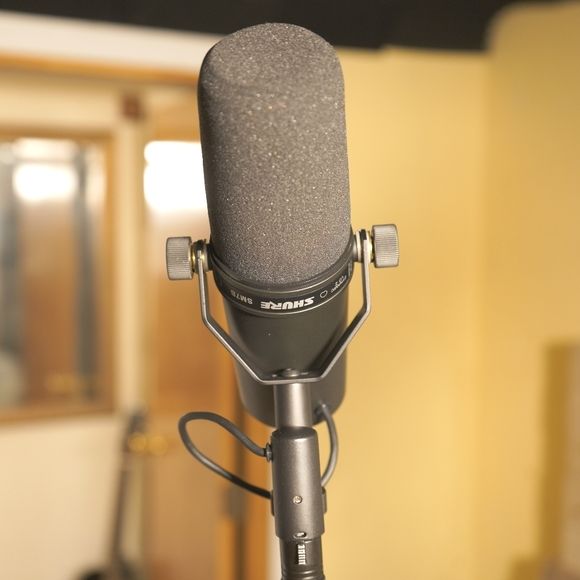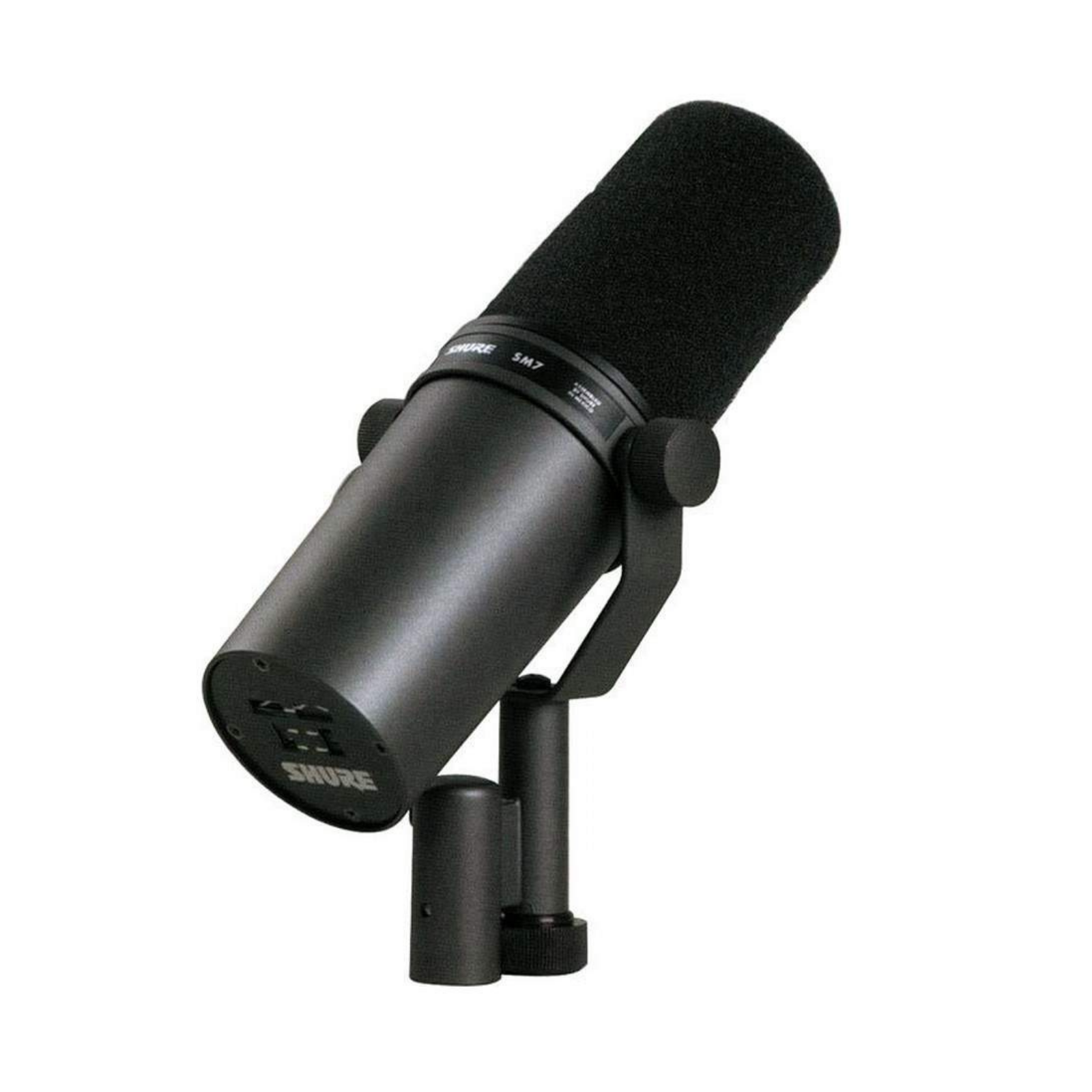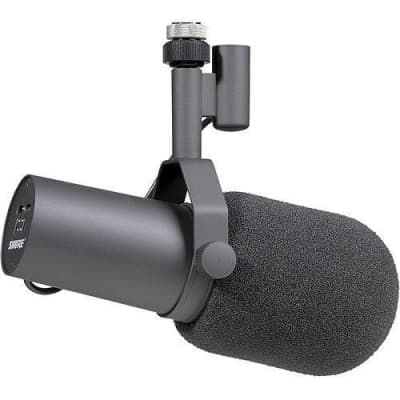Contents
Similar to other products from Shure, Shure SM7 and SM7B prove popular among audiophiles who place quality above all else. Between the two mics, Shure SM7 is the older one, but its clean sound and excellent compatibility remain attractive. On the other hand, designed to be an enhanced Shure SM7, Shure SM7B features several improvements. If you have trouble determining the superior model in Shure SM7 vs. SM7B, my article is exactly what you need.
A Comparison Of The Mics
| Shure SM7 | Shure M7B | |
| Type | Dynamic | Dynamic |
| Handling Noise | Good | Excellent |
| Low Cut Filter | None | Switchable |
| Gain Requirements | Moderate | High |
| Impedance | 150 ohms | 150 ohms |
Shure SM7 Vs. SM7B: Summary
Build And Aesthetics
In layman’s terms, SM7 boasts a traditional silver body style and a sturdy construction. Aside from that, it incorporates a classic windscreen that grants it an added vintage aspect. Meanwhile, SM7B sports a contemporary black appearance as well as a detachable windscreen/pop filter. That windscreen/pop filter makes cleaning and maintenance a breeze and can be replaced if broken.
Low Cut Filter
For your information, SM7 is able to catch a wide range of frequencies as there is no built-in low-cut filter. Depending on the situation, the lack of filter will come in handy but it may also necessitate additional post-processing to minimize undesired low-end noise. In the case of SM7B, it packs an adjustable low-frequency roll-off filter. That filter attenuates frequencies below a threshold (usually 100Hz or 150Hz) so it simultaneously reduces the proximity effect (boomy bass) and lowers background noise.
Gain Requirements
In the course of operation, SM7B requires significantly more gain than SM7 to achieve optimum performance. Because of its low sensitivity, SM7B requires people to use high-gain preamps/interfaces to reach ideal recording levels. Such an issue is going to be a deal-breaker l if you have an entry-level audio interface featuring poor gain capabilities. About SM7, since its sensitivity is higher than SM7B, it is less demanding in terms of gain requirements and works well alongside various audio interfaces/preamps.
Shielding
SM7B integrates improved electromagnetic shielding that reduces electromagnetic interference (EMI) from surrounding electronic equipment such as computer monitors, bulbs and so on. Regarding SM7, its electromagnetic shielding is sufficient to reduce interference from surrounding electronic equipment. While its shielding is not as sophisticated as that of SM7B, SM7 nonetheless works consistently for most of the time. .
Which One Is The Winner?
Both mics give a good account of themselves but SM7B usually holds an edge as it contains a captive stand nut. In times of need, you can attach SM7B to all sorts of stands and booms. Besides that, the accompanying removable yoke mount gives you a plethora of mounting possibilities. Still, you should consider a couple of factors before making up your mind:
Noise Handling
Because of its superior shock mount and mounting mechanism, SM7B is superior to SM7 in noise handling. It excels in lowering vibrations and handling noise which is a big plus if you must attach your mic to a boom arm. If you intend to pick up podcasting, broadcasting and so on, don’t hesitate to grab SM7B. While SM7 offers some resistance to noise, it still falls behind SM7B here.
Improved Mounting And Shock Isolation
SM7B includes an improved shock mount and mounting system that greatly eliminates vibrations and handling. It also employs the industry-standard XLR connection for professional audio equipment so it supports multiple audio interfaces, mixers and preamps. Last but not least, Its increased shielding provides a crisper audio transmission, especially in electrically active environments.
Proximity Test
SM7B’s switchable low-frequency roll-off filter provides much-need help if you have to deal with the proximity effect. When the mic is placed near the sound source (e.g., vocals), the proximity effect develops and results in an increase in low-frequency response. You may mitigate the effect by taking advantage of the filter and secure a balanced recording. There is no low-cut filter in SM7 so to tackle the proximity effective, it’s essential that you nail the mic positioning.
Plosive Test
All in all, the detachable windscreen/pop filter on SM7B guarantees superior plosive protection. Those that speak/sing into the microphone don’t have to worry about plosive sounds such as “p” and “b” noises. Consequently, they can ditch the additional pop filter knowing that it’s unnecessary. Even though SM7 possesses an adequate windscreen, you may need an extra external pop filter to regulate plosives properly.

Hi music fan! I am Jeff. Hope that you enjoy some stuff I shared here in my personal blog.
About myself, Currently I am in charging as Artist Manager/Music Supervisor at 72 Music Management. I did managed album to Grammy Award in 2017 with 7 Nominations from 2014-2020 and had the opportunities to work with : A.J. Croce, Blind Boys of Alabama, Bobby Rush, Dom Flemons, Dustbowl Revival, Sarah Grace
Governor of the Memphis Chapter of The Recording Academy is one of a award that I am lucky to achieved.


